 There is no more evocative phrase to emerge from World War II than “Afrika Korps.” The name conjures up a unique theater of war, a hauntingly beautiful empty quarter where armies could roam free, liberated from towns and hills, choke points and blocking positions, and especially those pesky civilians. It calls forth a war of near-absolute mobility, where tanks could operate like ships at sea, “sailing” where they wished, setting out on bold voyages hundreds of miles into the deep desert, then looping around the enemy flank and emerging like pirates of old to deal devastating blows to an unsuspecting foe. Finally, it implies a dauntless hero, in this case Field Marshal Erwin Rommel, a noble commander who fought the good fight, who hated Adolf Hitler and everything he stood for, and who couldn’t have been further from our stereotype of the Nazi fanatic. Everything about the Desert Fox attracts us—the manly poses, the out-of-central-casting good looks, even the goggles perched just so. Placing Rommel and his elite Afrika Korps at the fore allows us to view the desert war as a clean fight against a morally worthy opponent. It was war, yes, but almost uniquely in World War II, it was a “war without hate,” as Rommel famously called it in his memoirs. Continue reading “Panzer III D.A.K.”
There is no more evocative phrase to emerge from World War II than “Afrika Korps.” The name conjures up a unique theater of war, a hauntingly beautiful empty quarter where armies could roam free, liberated from towns and hills, choke points and blocking positions, and especially those pesky civilians. It calls forth a war of near-absolute mobility, where tanks could operate like ships at sea, “sailing” where they wished, setting out on bold voyages hundreds of miles into the deep desert, then looping around the enemy flank and emerging like pirates of old to deal devastating blows to an unsuspecting foe. Finally, it implies a dauntless hero, in this case Field Marshal Erwin Rommel, a noble commander who fought the good fight, who hated Adolf Hitler and everything he stood for, and who couldn’t have been further from our stereotype of the Nazi fanatic. Everything about the Desert Fox attracts us—the manly poses, the out-of-central-casting good looks, even the goggles perched just so. Placing Rommel and his elite Afrika Korps at the fore allows us to view the desert war as a clean fight against a morally worthy opponent. It was war, yes, but almost uniquely in World War II, it was a “war without hate,” as Rommel famously called it in his memoirs. Continue reading “Panzer III D.A.K.”
Asphalt Machine
 It is a hot, summer’s day – you are in your car, traffic has come to a halt and your patience is at its end. Ahead you can see the hustle and bustle of the heavy equipment repairing the nation’s highways and byways – never ending. Among these specialized machines is the subject of this article; the Paver – or Asphalt Finisher. A machine whose purpose is to receive a dump truck loads of a hot, sticky, black, petroleum based product into one side of the machine and distribute it evenly out the other side in order to create the roadways for our Sunday drives. In this article I will show some of the products and techniques that can be used to create the severe staining and discoloration caused by the extreme conditions found on road construction sites. Specifically the paving machine, whose constant contact with asphalt, grease and grime make it the perfect choice for weathering.
It is a hot, summer’s day – you are in your car, traffic has come to a halt and your patience is at its end. Ahead you can see the hustle and bustle of the heavy equipment repairing the nation’s highways and byways – never ending. Among these specialized machines is the subject of this article; the Paver – or Asphalt Finisher. A machine whose purpose is to receive a dump truck loads of a hot, sticky, black, petroleum based product into one side of the machine and distribute it evenly out the other side in order to create the roadways for our Sunday drives. In this article I will show some of the products and techniques that can be used to create the severe staining and discoloration caused by the extreme conditions found on road construction sites. Specifically the paving machine, whose constant contact with asphalt, grease and grime make it the perfect choice for weathering.
Farm Aid
The Germans withdrew from the area in October 1944 and Croatia was reconstituted as part of the new Yugoslavia, now a socialist republic under Tito’s leadership. Croatia became one of the six constituent republics of Yugoslavia (the others being Bosnia, Macedonia,  Montenegro, Slovenia, and Serbia). During Tito’s reign nationalist sentiments were repressed, especially among the Croats. A decentralization program went into effect in 1970 but it did little to pacify Croats. With Tito’s death in 1980, Croat demands for independence only increased but it was not until the fall of the Berlin Wall that things began to come apart.
Montenegro, Slovenia, and Serbia). During Tito’s reign nationalist sentiments were repressed, especially among the Croats. A decentralization program went into effect in 1970 but it did little to pacify Croats. With Tito’s death in 1980, Croat demands for independence only increased but it was not until the fall of the Berlin Wall that things began to come apart.
The fall of communism brought uncertainty to Yugoslavia in 1990. It encouraged nationalist sentiments in all of its republics. In Croatia, the elections produced a massive victory for Franjo Tudjman and his nationalist Croatian Democratic Union party. This group had proclaimed its aversion to both the ethnic Serbs living in Croatia and those living in Serbia. The move was spurred largely by the election of Serb nationalist Slobodan Milosevic as Serbian Communist Party leader. Milosevic’s rhetoric and repression of the Albanian population in Kosovo frightened the other republics.
Burden of Sorrow
 Modeling, specifically military modeling is generally content on building all of the various machines and weapons of war. We take great care in our quest to build accurate, small scale representations of the tools of the trade and in some cases we combine these with figures to create small scenes. These vignettes and dioramas often portray a certain historical event – a roadside meeting or front line engagement. However, if we are honest with ourselves we must come to the realization that even our most accurate depictions of the tools of war only tell a limited part of a greater story that is warfare. Rarely do we touch upon scenes which depict the horror, tragedy and loss that war causes on the human level.
Modeling, specifically military modeling is generally content on building all of the various machines and weapons of war. We take great care in our quest to build accurate, small scale representations of the tools of the trade and in some cases we combine these with figures to create small scenes. These vignettes and dioramas often portray a certain historical event – a roadside meeting or front line engagement. However, if we are honest with ourselves we must come to the realization that even our most accurate depictions of the tools of war only tell a limited part of a greater story that is warfare. Rarely do we touch upon scenes which depict the horror, tragedy and loss that war causes on the human level.
JS-II
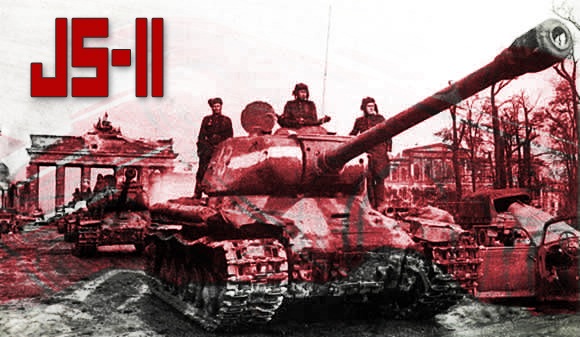 The IS-2 tank first saw combat in the spring of 1944 and were assigned to separate heavy tank regiments, normally of 21 tanks each. These regiments were used to reinforce the most important attack sectors during major offensive operations. Tactically, they were employed as breakthrough tanks. Their role was to support infantry in the assault, using their large guns to destroy bunkers, buildings, dug-in crew-served weapons, and other ’soft’ targets. They were also capable of taking on any German AFV if the need arose. Once a breakthrough was achieved, lighter, more mobile T-34s would take over the exploitation. The IS-2 weighed about the same as a German Panther, and was lighter than the German heavy tanks, the Tiger series. It was slightly lower than both. A major weakness was the two-part ammunition, which slowed
The IS-2 tank first saw combat in the spring of 1944 and were assigned to separate heavy tank regiments, normally of 21 tanks each. These regiments were used to reinforce the most important attack sectors during major offensive operations. Tactically, they were employed as breakthrough tanks. Their role was to support infantry in the assault, using their large guns to destroy bunkers, buildings, dug-in crew-served weapons, and other ’soft’ targets. They were also capable of taking on any German AFV if the need arose. Once a breakthrough was achieved, lighter, more mobile T-34s would take over the exploitation. The IS-2 weighed about the same as a German Panther, and was lighter than the German heavy tanks, the Tiger series. It was slightly lower than both. A major weakness was the two-part ammunition, which slowed 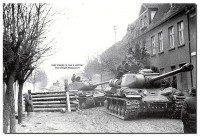 the rate of fire considerably. A second weakness was the very limited ammunition supply of only 28 rounds. This was the price paid by the small size of the design. One of the IS-2’s most notable engagements took place during the fighting in August 1944 to establish a bridgehead over the river Vistula around the town of Sandomierz.. This was the first time the IS-2 had come up against the fearsome Tiger II. During the engagement on August 13, the 71st Independent Heavy Tank Regiment’s eleven IS-2s blocked an attack by fourteen Tiger IIs of the 105th Heavy Panzer Regiment.
the rate of fire considerably. A second weakness was the very limited ammunition supply of only 28 rounds. This was the price paid by the small size of the design. One of the IS-2’s most notable engagements took place during the fighting in August 1944 to establish a bridgehead over the river Vistula around the town of Sandomierz.. This was the first time the IS-2 had come up against the fearsome Tiger II. During the engagement on August 13, the 71st Independent Heavy Tank Regiment’s eleven IS-2s blocked an attack by fourteen Tiger IIs of the 105th Heavy Panzer Regiment.
Raupenschlepper Ost (RSO)
 The Raupenschlepper Ost, literally “Caterpillar Tractor East”, is more commonly abbreviated to RSO. This fully tracked, lightweight vehicle was conceived in response to the poor performance of wheeled and half-tracked vehicles in the mud and snow during the Wehrmacht’s first winter on the Soviet Front. Steyr responded by proposing a small fully-tracked vehicle based upon its 1.5 tonne truck (Steyr 1500A light truck) already in use in the army. The vehicle was introduced
The Raupenschlepper Ost, literally “Caterpillar Tractor East”, is more commonly abbreviated to RSO. This fully tracked, lightweight vehicle was conceived in response to the poor performance of wheeled and half-tracked vehicles in the mud and snow during the Wehrmacht’s first winter on the Soviet Front. Steyr responded by proposing a small fully-tracked vehicle based upon its 1.5 tonne truck (Steyr 1500A light truck) already in use in the army. The vehicle was introduced 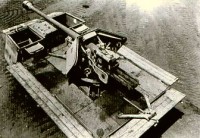 in 1942 as the Raupenschlepper Ost (RSO). It was initially designed as a prime mover and artillery supply vehicle but eventually served in a wide variety of roles. By 1943, the complaints of the infantry anti-tank units at the front that it was almost impossible to move their guns using trucks at daylight under enemy fire, leading to enormous losses of equipment when an emergency relocation (at the time more of a euphemism for withdrawal) was necessary found their way to the top. This led OKW to consider an older proposition to fit the 7.5 cm PaK 40/1 anti-tank gun -by then the standard Pak- on top of a RSO chassis and Hitler after seeing the blueprints ordered a limited production run for combat testing even before the test vehicles were completed.
in 1942 as the Raupenschlepper Ost (RSO). It was initially designed as a prime mover and artillery supply vehicle but eventually served in a wide variety of roles. By 1943, the complaints of the infantry anti-tank units at the front that it was almost impossible to move their guns using trucks at daylight under enemy fire, leading to enormous losses of equipment when an emergency relocation (at the time more of a euphemism for withdrawal) was necessary found their way to the top. This led OKW to consider an older proposition to fit the 7.5 cm PaK 40/1 anti-tank gun -by then the standard Pak- on top of a RSO chassis and Hitler after seeing the blueprints ordered a limited production run for combat testing even before the test vehicles were completed.
Diamond Reo – In the Rough
 The following article is excerpted from Issue 3 and Issue 4 of The Weathering Magazine. Issue 3 was my first collaboration with the magazine – The Chipping Issue. The feature article was this Diamond Rio truck on which I demonstrated techniques and thought about how to simulate wear and tear on newer, composite type vehicles.
The following article is excerpted from Issue 3 and Issue 4 of The Weathering Magazine. Issue 3 was my first collaboration with the magazine – The Chipping Issue. The feature article was this Diamond Rio truck on which I demonstrated techniques and thought about how to simulate wear and tear on newer, composite type vehicles.
Many newer vehicles have bodies made from composite materials that do not rust, yet the paint may still wear and chip. In this article we will apply our chipping techniques to a modern Big-Rig tractor in order to achieve a worn, well weathered appearance. For our demonstration we can imagine a long-haul truck that has driven many thousands of highway miles. Over time the effects of road grime, sun, road salts and weather have taken a heavy toll on the finish of our truck. Eventually a mechanical problem has caused our truck to be retired off of the road where it sits forgotten, parked behind the mechanics shop.
BT-7
 BT is the abbreviation of the Russian term for “fast tank”, with the BT-7 being the last in a line of Soviet fast tanks designed during the 1930’s. Each tank in the series incorporated the Christie type suspension – as designed by J. Walter Christie. The BT series of tanks where also know as convertibles in that they could be driven either on tracks or on their road wheels, carrying their tracks with them. The rear set of road wheels where powered while the front set was steerable. In practical term, however, the removal and replacing of the tracks proved to be a laborious and time-consuming process, thus this option was often ignored by its crews.
BT is the abbreviation of the Russian term for “fast tank”, with the BT-7 being the last in a line of Soviet fast tanks designed during the 1930’s. Each tank in the series incorporated the Christie type suspension – as designed by J. Walter Christie. The BT series of tanks where also know as convertibles in that they could be driven either on tracks or on their road wheels, carrying their tracks with them. The rear set of road wheels where powered while the front set was steerable. In practical term, however, the removal and replacing of the tracks proved to be a laborious and time-consuming process, thus this option was often ignored by its crews.
Twisted Fate
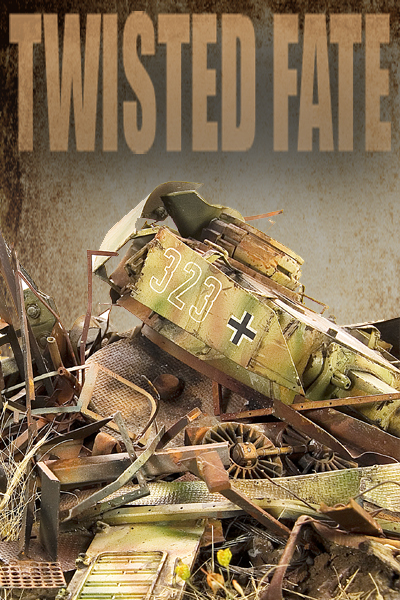 The Caterpillar D7 series medium bulldozer began service with the U.S. military during World War II. With upgrades and changes, it has been a workhorse for the U.S. Military for over fifty years, fulfilling its primary earth moving role as well as a host of other roles discovered for it, for example mine clearing with a special flail adapter kit. As is so often the case, the idea for this project is based upon a photograph showing a D7 Dozer in action during World War II clearing the wreckage of a Panzer IV from the roadway.
The Caterpillar D7 series medium bulldozer began service with the U.S. military during World War II. With upgrades and changes, it has been a workhorse for the U.S. Military for over fifty years, fulfilling its primary earth moving role as well as a host of other roles discovered for it, for example mine clearing with a special flail adapter kit. As is so often the case, the idea for this project is based upon a photograph showing a D7 Dozer in action during World War II clearing the wreckage of a Panzer IV from the roadway.

BMW R75
I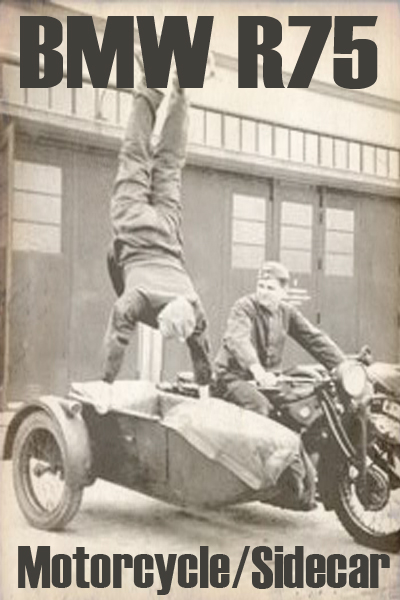 n 1916, two of Germany’s premier aircraft companies merged, and the new company was renamed Bavarian Motor Works, or more commonly referred to as BMW. Their logo was meant to resemble a white airplane propeller against a blue sky. However, the new company would soon be grounded with the signing of the Treaty of Versailles in 1919.Although deeply committed to aircraft engineering; Max Fritz reluctantly looked to motorcycle productions to help cure the company’s economic woes. Within just four short weeks this engineering skill had produced the blueprints of what would become the “flat-twin” or Boxer engine, first produced in 1921.
n 1916, two of Germany’s premier aircraft companies merged, and the new company was renamed Bavarian Motor Works, or more commonly referred to as BMW. Their logo was meant to resemble a white airplane propeller against a blue sky. However, the new company would soon be grounded with the signing of the Treaty of Versailles in 1919.Although deeply committed to aircraft engineering; Max Fritz reluctantly looked to motorcycle productions to help cure the company’s economic woes. Within just four short weeks this engineering skill had produced the blueprints of what would become the “flat-twin” or Boxer engine, first produced in 1921.
